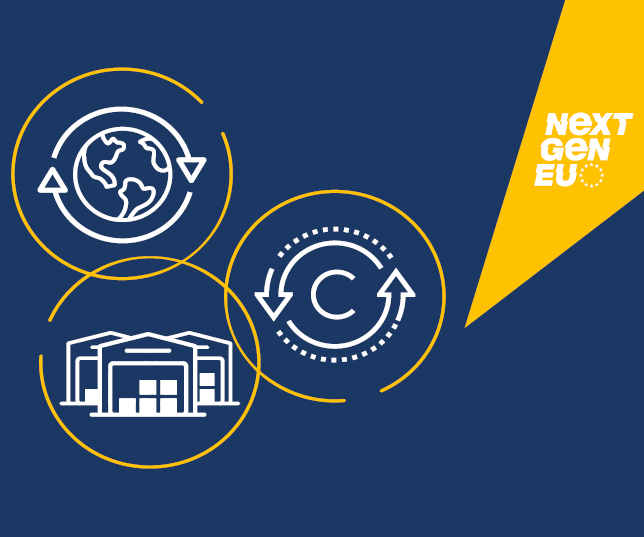The next generation of EU own resources

date: 30/03/2022
On 22nd December 2021, the Commission proposed “the next generation of EU own resources”, as committed in the political agreement underpinning the establishment of NextGenerationEU (NGEU). What are these new own resources, and how are they linked to NGEU?
To finance NGEU and support Europe’s recovery, the European Commission has been empowered to borrow up to €800 billion on capital markets between mid-2021 and 2026. Using these funds, the Commission will provide Member States with €338 billion in grants and up to €385.8 billion in loans. In addition, a further €80 billion will be raised to finance EU policies such as REACT-EU.
All borrowing under NGEU will be repaid by 2058. The amounts borrowed for RRF grants to Member States and top-ups for EU policies will be repaid by the budget from 2028 onwards.
Adoption of the new own resources package is not needed to ensure repayment of NGEU debt. That is already guaranteed by the Own Resources Decision, under which the Commission can call on EU Member States to contribute additional resources needed to repay NGEU debt, on top of the funds needed for EU budgetary programmes. The new own resources package will change the mix of revenues that will fund future budgets. It could in particular reduce the need to rely on Member State contributions that are calculated as a function of their GNI.
How does the EU finance its expenditure, including the repayment of borrowing?
The system of own resources, in place since the 1970s, provides for a stable and sufficient financing of the EU.
There are four current categories of own resources (meaning the revenue that the EU collects for its budget): revenue coming from customs duties, contributions based on Value Added Tax (VAT), contributions based on non-recycled plastic packaging waste and a direct contribution by EU countries, known as Gross National Income (GNI)-based contribution. The balance between the level of Union budgetary expenditure and revenue is ensured by the GNI-based contribution, which automatically fills the gap with the outturn from the customs duties, VAT and plastics-based own resources. As a result, a budgetary balance on an annual basis is ensured.
In order to make sure that the EU has the resources necessary to repay NGEU debt, the Own Resources Decision adds a temporary increase to the maximum amount of revenue the EU can call from Member States per year. Specifically, it adds to the basic own resources ceiling of 1.4% of EU Gross National Income an additional allocation of 0.6%. This additional amount is in place until 2058 and ensures sufficient budgetary space for the repayment of the Union’s NGEU obligations.
Repayment of debt – whether NextGenerationEU’s or otherwise – is a contractual obligation that the Union undertakes towards investors. In addition, EU law – specifically, Article 323 of the Treaty on the Functioning of the European Union (TFEU) – requires the relevant Union’s institutions to ensure that “the financial means are made available to allow the Union to fulfil its legal obligations in respect of third parties”. This provision constitutes another safeguard that ensures the repayment of borrowing.
The combination of these safeguards means that the EU will always have to meet its EU debt repayment obligations, be it by an automatic increase of the direct contribution by Member States – the GNI-based contribution – or by active report management, for example re-allocation of resources within the budget.
Why are the new sources of revenue for the EU budget important in the context of NextGenerationEU?
Since new own resources are not strictly necessary for NextGenerationEU to function, nor for its repayment, why is the Commission proposing their introduction? After all, repayment needs could be met by an automatic increase of the direct contribution by Member States – the GNI-based contribution – or by cuts in programme expenditure and investment instruments in the future long-term budgets. Neither of those options is, however, politically desirable. By putting forward new own resources, the Commission is – in addition to fulfilling its interinstitutional commitment – proposing to avoid the binary choice between cutting programmes that provide added value and benefits to EU citizens, or increasing the budgetary contributions from Member States.
Specifically, the Commission’s proposal for the next generation of own resources covers three novel sources of revenue based on: a new emissions trading system; a carbon border adjustment mechanism; and a share of residual profits from multinationals that will be re-allocated to EU Member States under the recent OECD/G20 agreement on the re-allocation of taxing rights. A full overview of the proposal and its different elements is available in the material here and here.
Each new own resource links directly to the EU’s policy priorities and ambitions for a greener, more digital and more resilient Europe. Their introduction would therefore serve as a further confirmation of the EU’s commitment to these priorities also on the revenue side of the EU budget, in a firm expression of the EU’s coherence.
Should you wish to learn more about the EU system of own resources, check our website or get in touch with our team.
